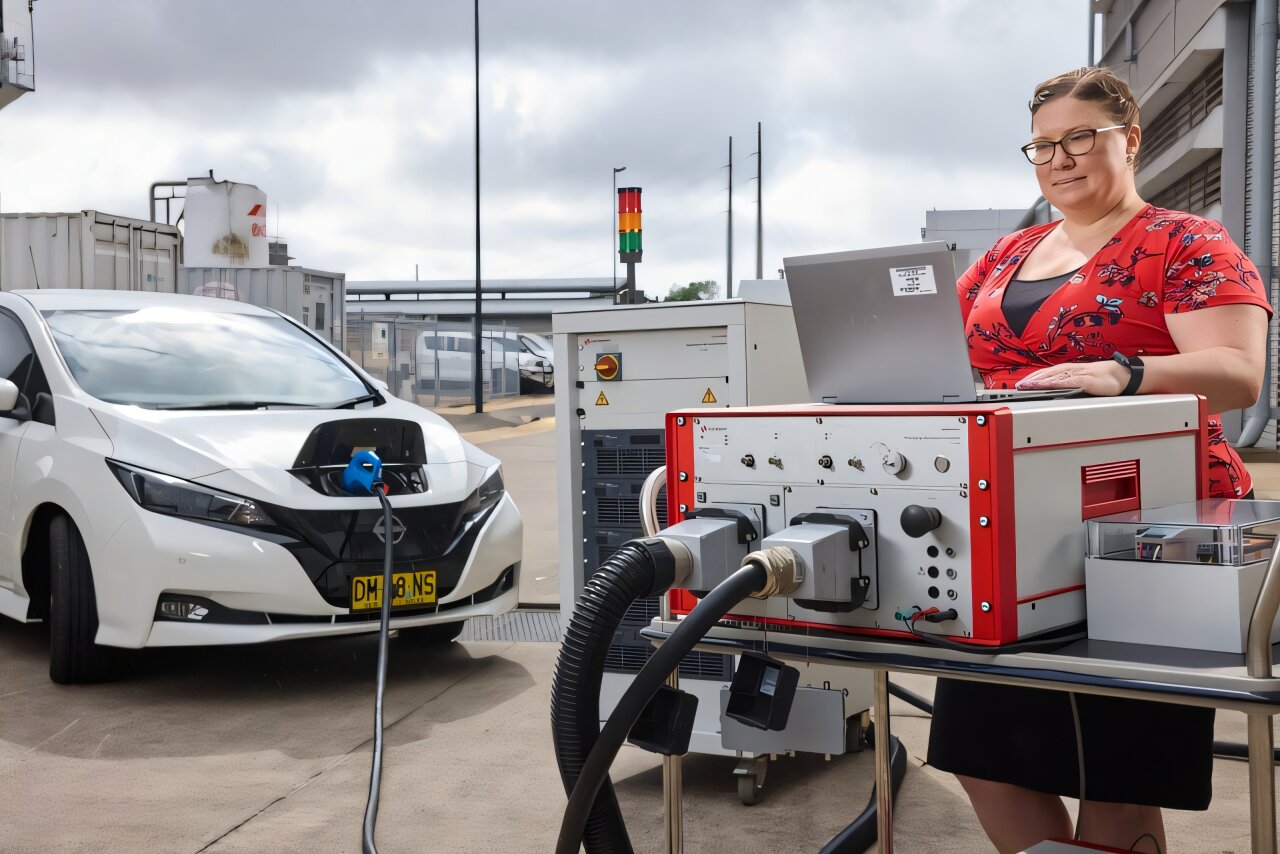
A collaborative effort between Essential Energy and CSIRO has showcased vehicle-to-grid (V2G) technology utilizing readily accessible tech solutions. This initiative underscores the possible impact of V2G in reshaping how energy is managed within homes across Australia.
The study, carried out in a recently established test facility at Essential Energy’s Port Macquarie main office, effectively showcased how electric vehicles fitted with the most prevalent charging connector in Australia can utilize and distribute power generated by residential photovoltaic installations.
Dr. Sam Behrends, who leads the project, indicates that this advancement represents a crucial milestone in facilitating rooftop solar systems and enhancing grid stability across Australia.
"This initiative represents a significant achievement for Australia, as it effectively showcases a CCS2 bidirectional charger using a commercially available V2G-enabled vehicle," stated Sam.
This development is important because it paves the way for broader implementation of widely accessible CCS2-compliant V2G technology, allowing both homes and utility providers to utilize electric vehicles as adaptable power sources.
A significant move towards energy innovation
The study occurred between late 2024 and early 2025 At Essential Energy’s Innovation Hub in Port Macquarie, researchers utilized a simulated residential setting to mimic actual household energy consumption and grid connectivity. This setup allowed them to evaluate the practical application of bi-directional electric vehicle charging for managing domestic energy needs and reducing grid outputs.
Several demonstrations of Vehicle-to-Grid (V2G) technology have taken place in Australia utilizing the CHAdeMO charging connector, predominantly employed by some Japanese electric vehicle models like the Nissan Leaf. This particular plug type, however, is gradually falling out of use. Nevertheless, up till this point, there hasn’t been a commercially accessible bidirectional charger compatible with Combined Charging System 2 (CCS2) down under.
This successful showcase of CCS2 two-way charging highlights the potential for various present and upcoming electric vehicles to act as 'rolling batteries' within households. This capability could facilitate greater integration of residential solar panels along with other forms of renewable energy into Australia’s electrical network, according to Sam.
Real-world insights into V2G potential
The research delivered several important insights, highlighting the potential of V2G technology for Australian households and electricity networks.
Two varieties of Vehicle-to-Grid (V2G) technologies were evaluated. The first setup involved a Nissan Leaf electric vehicle connected to a CHAdeMO Wallbox Quasar bi-directional direct-current charger. In the second configuration, an AUSEV Ford F150 Lightning was coupled with an enhanced variant of Sigenergy’s CCS2 charger. Each system was effectively incorporated within a home simulation environment, facilitating both self-power generation and surplus electricity delivery back to the power network.
The V2G lab successfully emulated real household energy usage and grid connections, enabling tests across different conditions such as varying seasons.
Sam stated that our partnership with Essential Energy has proven the viability of V2G technology and highlighted its ability to revolutionize energy management in homes equipped with solar panels.
The lab facilities created by Essential Energy and CSIRO during the trial stage are now being utilized by businesses to create cutting-edge products. This encompasses incorporating electric vehicles into home power setups and assisting electrical grids in preparing for future energy innovations.
Upcoming developments for Vehicle-to-Grid technology in Australia
Building on the success of this pilot project, CSIRO and Essential Energy are in discussions to extend their collaboration. The next phase will focus on expanding the laboratory's capabilities, further refining how bi-directional charging technology can be implemented and exploring real-world deployment scenarios.
This will include better automation and more advanced communication standards and control technologies. This will enable testing of a wide range of future V2G system configurations currently under development.
As EV adoption grows across Australia, V2G technology has the potential to provide flexible energy storage that supports a more renewable-powered energy system. With continued research and investment, using EVs as mobile energy storage could soon become a reality for many Australian households.
"We are optimistic that Vehicle-to-Grid (V2G) technology will provide advantages not just for electric vehicle owners, but also for the broader public by enhancing the energy storage capabilities of our power systems," Sam stated.
"With their greater power and energy density as well as mobility, EVs could offer a level of flexibility and impact beyond anything previously seen in the energy sector in Australia," Sam said.
Provided by CSIRO
This story was originally published on Tech Xplore . Subscribe to our newsletter for the latest sci-tech news updates.